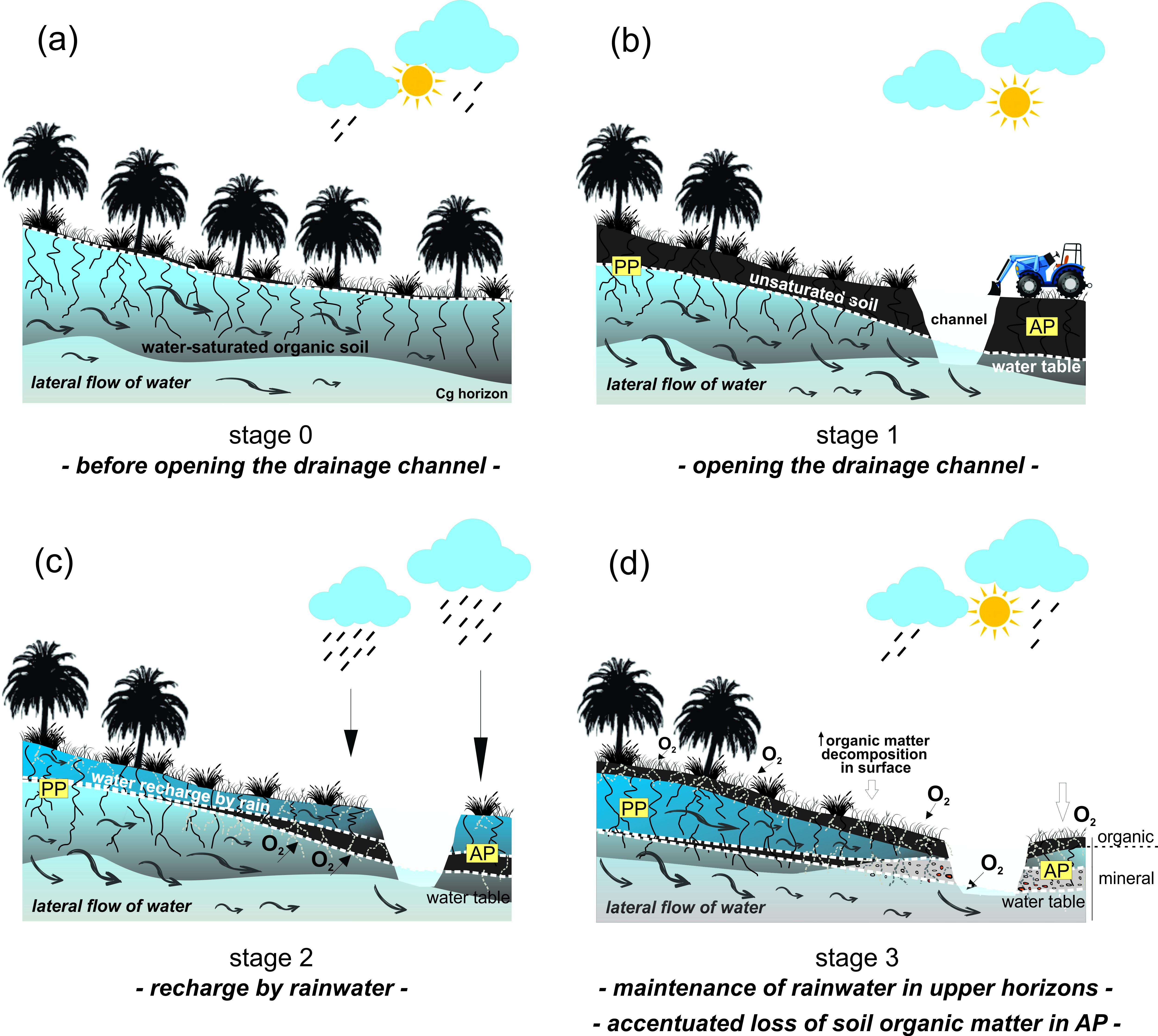Rev. Bras. Ciênc. Solo.2022;46:e0210065.
Soil characterization and drainage effects in a savanna palm swamp (vereda) of an agricultural area from Central Brazil
21/Mar/2022
DOI: 10.36783/18069657rbcs20210065
Graphical Abstract

Highlights
Drainage and vegetation removal in savana palm swamp trigger intense soil degradation.
A multivariate approach enables us to identify three drivers related to the degradation.
Artificial drainage changes vereda’s water dynamic producing soil organic carbon loss.
Most soil properties present differences between preserved and anthropized profiles.
Veredas are complex and fragile ecosytems that should be fully protected.
ABSTRACT
Brazilian palm swamps (veredas) are fundamentals in the hydrological balance of watercourses in the Brazilian savanna (Cerrado). The “sponge effect” of their soils is the main factor controlling local hydrology, storing rainwater, and functioning as headwaters. The restricted knowledge of these tropical ecosystems has led to increased losses, poor preservation, and reduction in their ecosystem services. Veredas have become refuges surrounded by croplands, often drained and inappropriately managed. This study shows the impacts of anthropization on soil processes and properties of a vereda in an agricultural area. Two soil profiles were selected and characterized as preserved and anthropized, respectively upstream and downstream of the studied vereda. Morphological, physical, chemical and microbiological properties were analyzed. Principal Components Analysis (PCA) was applied to synthesize the data and provide evidence of the main properties and underlying processes that most responded to the degradation action. The arrangement of this analysis shows three main distinguish drivers: one joining the properties related to the humification of organic matter and relative accumulation of mineral matter versus accumulation of organic matter; the second with properties related to soil chemical reactivity; and the third reflecting the mineralization of organic matter. Our results suggest that the anthropic action has strongly caused the organic carbon reduction (~22 %). After 20 years, the anthropized soil presents not only a great decline in carbon stock (~14 kg m-2), but also strong impacts on several other ecologic functions, such as water holding capacity. Veredas are complex and fragile environments, and they should be fully protected to maintain their ecosystem services.
671

